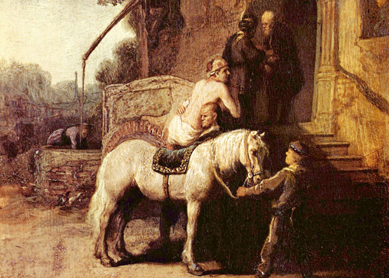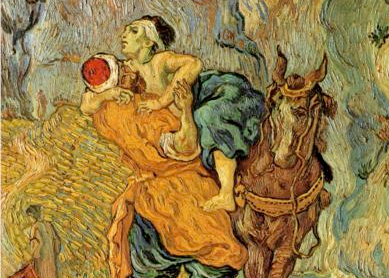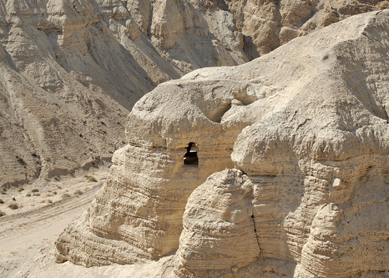Since ancient times, the Hebrew Bible/Old Testament has existed in multiple versions or editions. Until the second through fourth centuries B.C.E., there was no “Bible” as we know it, only different scrolls and codices circulating in different communities. Often, different readings or versions of the same scroll were kept side by side, all given religious authority and all receiving the same sacred respect. The Samaritan Pentateuch (SP) represents one textual tradition (in scholarly terms, a “recension”) that descends from an ancient and influential form of the five Books of Moses.
Other ancient textual traditions include an early form of the Masoretic Text, the Septuagint, and other forms that are harder to classify. Manuscripts recovered from the Judean Desert, particularly from the caves at Qumran, have yielded an abundance of evidence indicating the fluidity of the Hebrew Bible in the centuries before the turn of eras. That manuscript evidence, some of it dating back to the third through first centuries B.C.E., indicates that the Samaritan Pentateuch is an extension of an earlier text-type, currently labeled the Pre-Samaritan Text, found in the Judean Desert along with manuscripts in a version that would later become the Masoretic Text and manuscripts similar to the Septuagint. The Samaritan Pentateuch provides an important witness to the early textual history of the first part of the Hebrew Bible. It was considered authoritative by at least some of the New Testament writers, and it remains the sacred text of the Samaritan community.
There are several competing accounts of the Samaritan Pentateuch’s origin and early history. According to Samaritan tradition, the Samaritans represent the true Israel from which others broke away, first under the influence of Eli the priest during the pre-monarchical period, and then through the “false cult” in Jerusalem and the deceptive work of Ezra in the early Second Temple period. Likewise, Samaritan tradition holds that the Samaritan Pentateuch is the genuine version of the Torah, faithfully preserved through the centuries by the Samaritans and traceable all the way back to Abisha, great-grandson of Aaron, brother of Moses. These claims are difficult for modern historical scholarship to confirm or deny.
Perhaps the best-known version of the Samaritan Pentateuch’s origin involves the account presented in
The manuscript discoveries in the Judean Desert have provided new clarity regarding the origin and early history of the Samaritan Pentateuch. The third- to first-century-B.C.E. Pre-Samaritan Texts from the Judean Desert are characterized by many of the editorial features found in the Samaritan Pentateuch (including harmonizing interpolations, emphasis on the role of Moses, and similar grammatical forms and spelling), but without the veneer of sectarian features favoring the Samaritan religious sect. The cumulative evidence points to the conclusion that the Samaritan Pentateuch is the product of a sectarian editing of the Pre-Samaritan text type, probably produced in the first century B.C.E through the first century C.E.
Bibliography
- Anderson, Robert T., and Terry Giles. The Keepers: An Introduction to the History and Culture of the Samaritans. Peabody, Mass.: Hendrickson, 2002.
- Anderson, Robert T., and Terry Giles. The Samaritan Pentateuch: An Introduction to Its Origins, History and Significance for Biblical Studies. Atlanta: Society of Biblical Literature, 2012.





